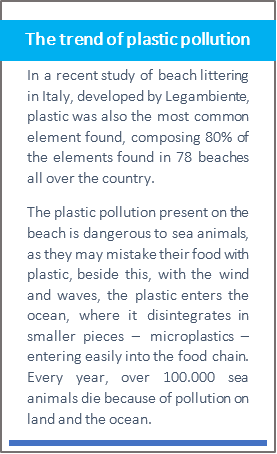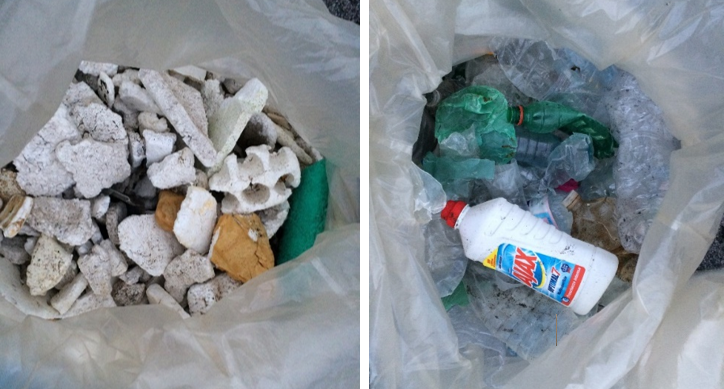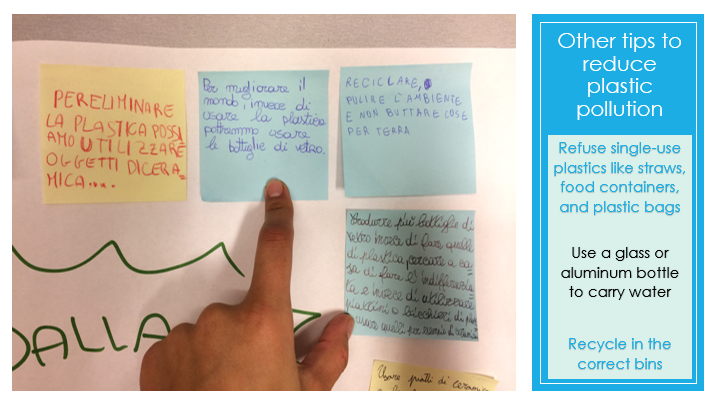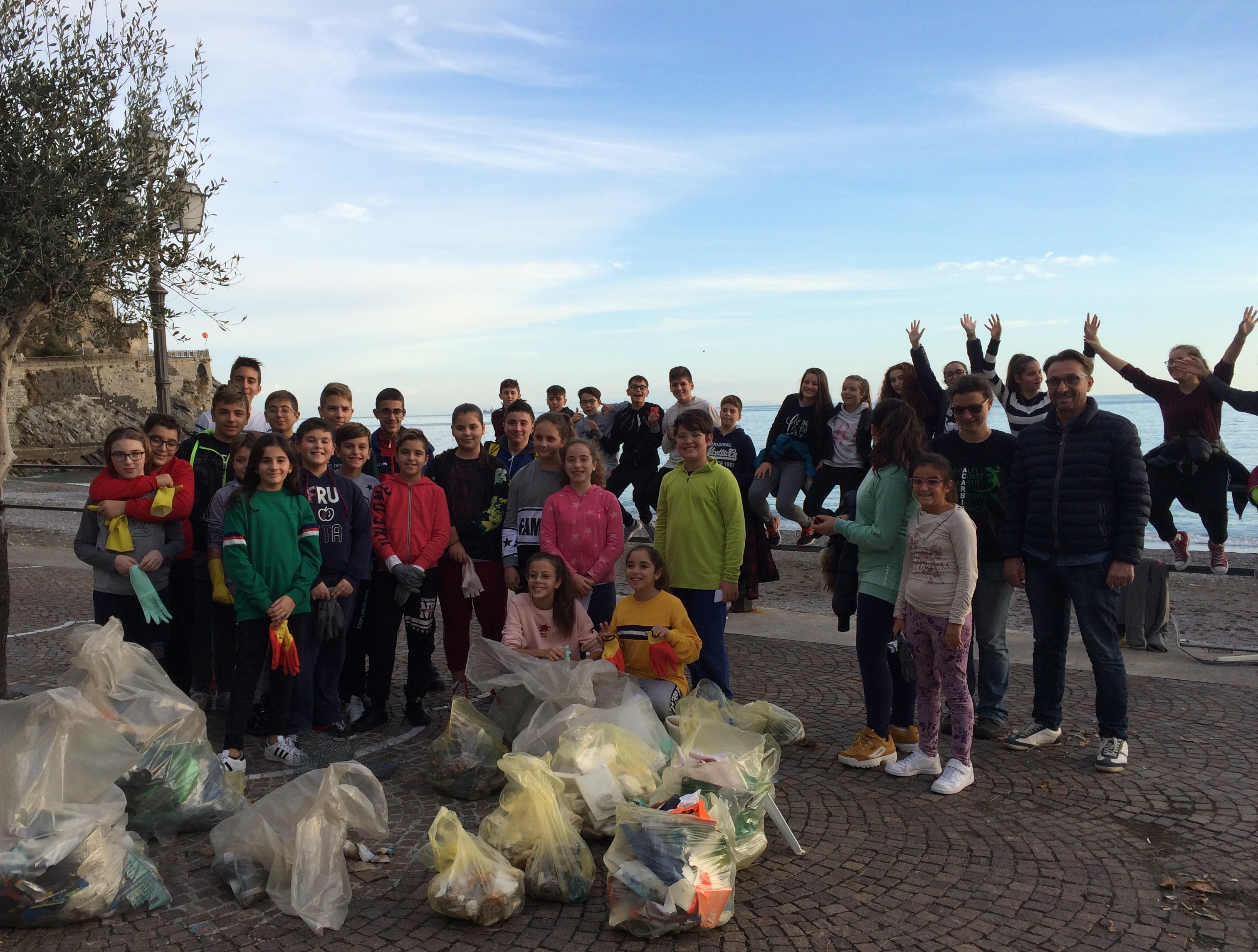During UNESCO Week 2018, students from II A, III A e III B of Istituto Comprensivo di Minori participated on two beach cleanups in their town. In collaboration with ACARBIO and Club per l’Unesco di Amalfi, the students were engaged in a lecture related to the topic “Moving away from plastic: a path to be built”, to continue with field work on the beach to research which type of trash was present in the sand and what was the most common element.
The activity was proposed to the professor Assunta Valittuti, which motivated and encourage the school to develop it during the 21st and 23rd of November. Over 50 students participated alongside with their teachers, being divided in six groups, ‘Turtle’, ‘Whale’, ‘Jellyfish’, ‘Seagull’, ‘Dolphin’ & ‘Octopus’. Each of them were designated an area to pick up and collect the trash lying in the sand. The group of the 21st of November, cleaned from the central free beach to the bridge, and the group of the 23rd cleaned to the left side of the central beach. Every team had their own bags to collect the trash, and all the students were very cheerful and motivated to keep going for a long time. They cleaned the beach for half an hour, and after this, they gathered together in the Lungomare (costal pedestrian site) to study the elements. All the collected trash after the cleanup was managed by the Municipality of Minori, who supported the action and recycled it in its corresponding bins.
Results and analysis of the elements found by the students

84% of the elements found on the beach corresponded to plastic, where there were bottles, pieces of cases for fruits or sea food, nets, motor oil and detergent bottles, firework lids, among others. The most common plastic element, however, was polystyrene. This is used for transporting fish or food and was found in big and small pieces in a total of 1114. This means  that 28% of the plastic trash in the beach is made of this, which can be very dangerous, as it breaks easily into smaller parts and can get ingested by fish when it arrives to the ocean.
that 28% of the plastic trash in the beach is made of this, which can be very dangerous, as it breaks easily into smaller parts and can get ingested by fish when it arrives to the ocean.

The category “other elements” was mainly composed by pieces of clothes left by people at the beach, swimsuits, underwear or socks, and there were also present sailing ropes and elements that could not be categorized or that had mixed components.
Cigarette butts where the lowest element present in the trash, in contrast to what was found during the development of the project Make it Blue during August 2018, where volunteers cleaned the beach of Minori, picking up an average of 428 cigarette butts per day. The big difference could be the number of visitors that Minori receives during summer, as it is constantly crowded by people who are spending the sunny days at the beach.
Back in the school
After analyzing the elements and filling in their results tables, the team went back to the school to compile the results and close the activity with a group reflection on what they found and what actions can they take to avoid plastic pollution. Some of their suggestions where “use more than one time the same plastic object if it is possible” “throw away paper and bottles in the waste bin, not on the beach or in the ground” “do not put plastic in the ocean, we should keep the environment clean and always recycle”, these where collected in notes that where pasted in a poster in each class, to remind the participants of the small personal actions that can make the difference.

Inspiration from across the world
The idea of this activity came from our intern Carla, who got in contact with the Chilean team of “Científicos de la basura” – Trash Scientists – who have been investigating the trash present in the beaches of her country. In different periods of time, for almost 10 years, schools all over the 4.000 kms of Chilean coast have been collaborating in the research to know what the status of the beaches is.
“During August 2018, I was one of the team leaders of Make it Blue in the beach of Minori. Every day we picked up plastic bottles, cups, spoons, napkins and cigarette butts, and I became more and more interested in knowing what would happen to the beach after summer. When I discovered the project by Científicos de la Basura, I thought it would be relevant for the school children of Minori to know what type of trash is present in their beach. This information could also be helpful to develop a thesis around the impact that this activity may have on Education for Sustainable Development.
I was surprised by the motivation of the Italian kids, which were very excited of participating in the research, and were picking up trash very fast, some of them even went further than their designated area to keep collecting elements. After classifying the elements and reflecting in the classroom about the provenience of the trash, some of the kids where asking “when is the next cleanup?”, for me that was a very fulfilling moment, and made me think that this type of activity will cause an impact on the community through the kids. I hope that these initiatives can be spread all over the Amalfi Coast, to raise the awareness of the local community about the status of their own beaches, and reduce pollution”

